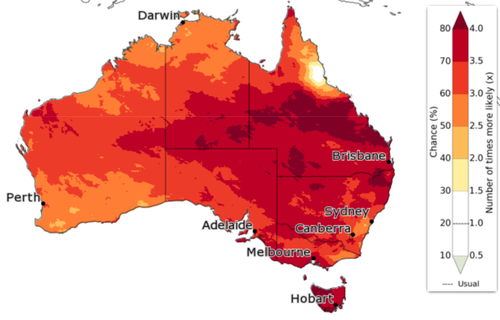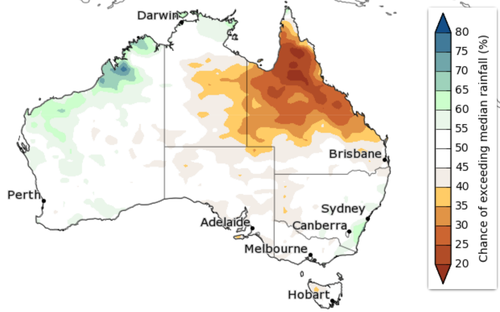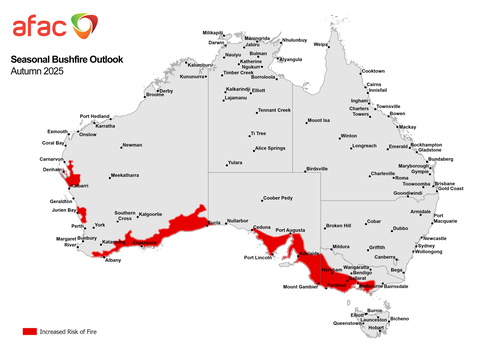Here’s what you need to know.

For most of the country, unusually warm temperatures are on the cards.
“While autumn is often a time for cooler weather to begin, this season is very likely to be warmer than average across Australia and summer heat may persist into early autumn,” the BoM said earlier this week.
The Bureau says every single state and territory is either “likely” or “very likely” to experience warmer-than-normal temperatures.
Its forecasts show a huge portion of the country has a 50 per cent chance or more of going through one of the hottest autumns on record, with maximums reaching the top 20 per cent of historical observations.

Meanwhile, almost the entire country has at least an 80 per cent chance of recording above-average maximum temperatures this autumn.
While temperatures are likely to be hotter than normal this autumn, the amount of rainfall is expected to be more in line with historical averages.
“Rainfall is likely to be in the typical range for the season for most of Australia,” the BoM said.

But there’s a bit of a mixed bag for the northern states and territories.
Far North Queensland is set for a dry autumn, while Western Australia’s Kimberley and Pilbara regions could be wetter than average.
“For parts of the far north-west of the country, there is a chance of above average rainfall,” the Bureau said.
“It’s also likely to be drier than usual for most of Queensland except for southern and south-east areas.
“Tropical cyclones, tropical lows, storms and active monsoon bursts are still possible in the north over the coming months, which can bring particularly heavy rain.”

Peak bushfire season for much of Australia might be over, but there are still parts of the country with a heightened fire risk for autumn.
The National Council for Fire and Emergency Services (AFAC) says areas on the southern coast will experience have elevated danger levels over the next three months.
“The same dry conditions that have seen recent fires in Victoria and in Western Australia look set to continue across much of the southern coastline of mainland Australia,” AFAC chief executive Rob Webb said.

“It means that the fire season in these areas may go a little longer this year.
“Local fire authorities across Australia are monitoring bushfire risk this season so you can be ready to act if there is an emergency. Many agencies will also commence prescribed burning throughout autumn to help mitigate risk for the coming months and years.”








